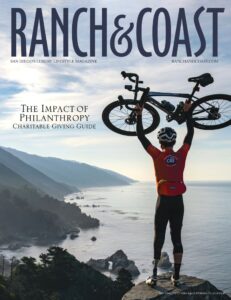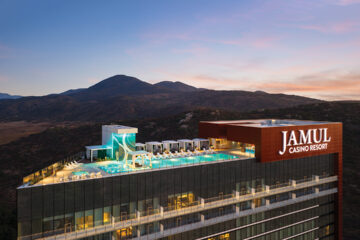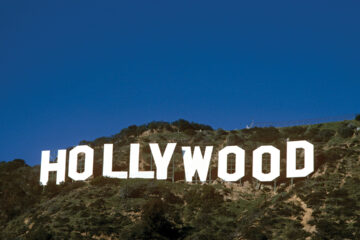Balboa Park: Tales of the Panama-California Exposition

Tales of the Panama-California Exposition
Notable Visitors
More than 3.7 million visitors attended the Panama-California Exposition. In addition to those in the photo, notable visitors included Vice President Thomas R. Marshall, Secretary of State William Jennings Bryan, Assistant Secretary of the Navy Franklin D. Roosevelt, and former presidents William Howard Taft and Theodore Roosevelt. BILL ABRAMS
Streetcars
One of the main considerations for San Diego leaders concerning the Panama-California Exposition was transportation. In order to service the large number of people that were to attend the Exposition, John D. Spreckels and his San Diego Electric Railway Company (SDERy) began work on streetcars that could handle the traffic of the event as well as the growing population of San Diego. The routes ultimately spanned from Ocean Beach, through Downtown, Mission Hills, Coronado, North Park, Golden Hill, and Kensington, even briefly serving as a link to the U.S.–Mexico border. BILL ABRAMS
Pied Piper Day
There was plenty of drama at the fair. May 27, 1916 was Pied Piper Day and on that day, a Coronado lawyer portraying the Pied Piper appeared from Cabrillo Canyon to insist on payment from the mayor and council of Hamelin for getting rid of dreaded rats. The tale had been greatly popularized and was well known. The enactment of the legend was a not so thinly veiled play on the San Diego City Council’s refusal to pay rainmaker Charles Hatfield for producing desperately needed rain that ended a long drought. There had been a contractual arrangement between the council and Hatfield. That legal agreement had not been honored, and to protest, approximately 13,000 children were led by the Pied Piper to the Isthmus, where they were seen going into the Panama Canal Building, symbolizing the mountain where the children of Hamelin disappeared. In reality, the youngsters emerged from the other side of the building to continue their adventures in the park. After protest came fun. DARLENE G. DAVIES

 Upcoming Gala Concert
Upcoming Gala Concert
Just as there was a grand gala concert at the Organ Pavilion on New Year’s Eve, 1914, offering a memorable performance that marked the inauguration of the Panama-California Exposition, there will be a Centennial Grand Opening Gala in the same place December 31, 2014. This concert will pay homage to the original program by including some components of the historic performance. There will be old and new, honoring the past and looking from the present to the future. Civic organist Dr. Carol Williams has carefully selected a wide range of music for diverse musical tastes. The Exposition Centennial also celebrates the 100th birthday of the Spreckels Organ, a wonder of the world in 1915. People were amazed by the magnificent instrument and the glorious sounds it made. DARLENE G. DAVIES

Facade Fakery
Building interiors for all of the main exhibit halls were nothing more than unadorned empty shells. With such elaborate and beautiful Spanish Colonial Revival exteriors, visitors were brought back to reality by the austere, no-nonsense interiors. Simple, wood plank walls and floors, white-washed timber posts, and trusses spaced between large skylights were the only interior features. Architect Bertram Goodhue reminded us that: “Exposition Architecture differs from that of our everyday world in being essentially of the fabric of a dream… after the fashion that stage scenery provides — illusion rather than reality.” DAVID MARSHALL, AIA
On Loan from Philadelphia
San Diego’s mission bells were apparently not prestigious enough to impress fair-goers, so exposition organizers acquired a loan of the famed Liberty Bell from Philadelphia for a three-day visit in November 1915. After touring the competing San Francisco exposition, the bell arrived in San Diego via train and was put on display in the Plaza de Panama. At the official reception, thousands of school children placed floral tributes on the bell’s platform and politicians took turns praising liberty. DAVID MARSHALL, AIA
Balboa Park’s Volcano
The Isthmus fun zone at the north end of the fairgrounds was touted as “the best array of entertainment features ever assembled.” One of the attractions was different from the rest because it featured a 70-foot-tall volcano. The impressive recreation of Hawaii’s Mount Kilauea, made of plaster and wood framing, reminds one of Disneyland’s Matterhorn, which opened 44 years later. The “Hawaii Old and New” attraction featured “Hula-Hula Dances” inside the volcano DAVID MARSHALL, AIA
Notable Visitors: Courtesy of Panama-California Exposition Digital Archive Streetcars, Facade Fakery, Balboa Park’s Volcano: Courtesy of David Marshall, AIA Current day organ pavilion: courtesy of Carol Williams All other images courtesy of Darlene G. Davies
Directory
The Great Panama-California Exposition
1915 Panama-California Exposition
Spreckels Outdoor Organ Pavilion
Gardens of the Panama-California Exposition
Legacy of the Foreign Arts Building
Panama-California Sculpture Court











Comments